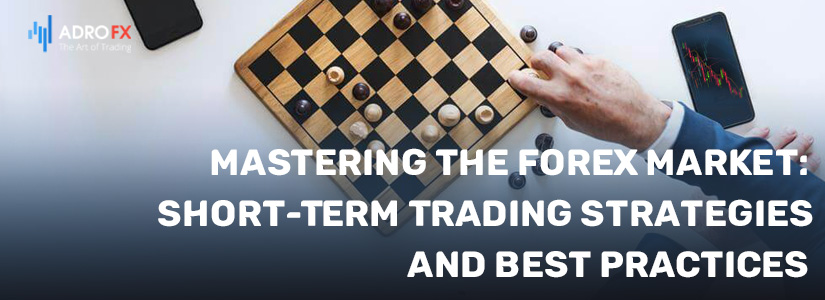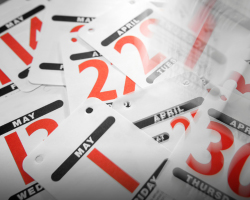Mastering the Forex Market: Short-Term Trading Strategies and Best Practices

Foreign exchange (forex) trading is a dynamic and potentially lucrative venture, attracting traders from all corners of the globe. Among the diverse strategies employed by forex traders, short-term forex trading, commonly known as day trading, stands out as a high-octane approach that thrives on intraday volatility. In this fast-paced trading style, traders open and close positions within the same trading day, capitalizing on small price movements to achieve consistent gains. However, the road to success in day trading is not without challenges, and it demands a keen understanding of market dynamics, technical analysis skills, and the ability to manage risks effectively. This article explores the ins and outs of short-term forex trading and provides valuable tips and tricks to navigate this exhilarating journey while minimizing potential pitfalls.
What Is Short-Term Forex Trading or Day Trading?
Short-term forex trading, commonly known as day trading, is a trading strategy where traders open and close positions within the same trading day. Unlike long-term investors who hold positions for days, weeks, or even months, day traders aim to capitalize on small price movements and intraday volatility in the foreign exchange (forex) market.
In day trading, traders closely monitor price charts, technical indicators, and market news to identify short-term trends and trading opportunities. The goal is to profit from rapid price fluctuations, taking advantage of both rising and falling markets. Day traders often execute multiple trades throughout the day, sometimes within minutes or seconds, aiming to accumulate small gains that can add up over time.
Key characteristics of short-term forex trading or day trading include:
High-Frequency Trading: Day traders make numerous trades within a single trading day, seeking to exploit small price movements. They rarely hold positions overnight to avoid potential overnight risks.
Technical Analysis: Day traders primarily rely on technical analysis tools, such as candlestick patterns, moving averages, RSI, and Fibonacci levels, to identify entry and exit points for their trades.
Intraday Volatility: Day traders thrive on intraday price volatility. They look for currency pairs with significant price movements and liquidity, as these present more opportunities for quick trades.
Quick Decision-Making: Day trading requires fast decision-making skills and discipline. Traders must execute trades swiftly, often based on predefined trading strategies and risk management rules.
Risk Management: Effective risk management is critical in day trading. Traders set strict stop-loss and take-profit levels to limit potential losses and protect profits.
Focus on Liquid Currency Pairs: Day traders usually focus on major currency pairs, such as EUR/USD, USD/JPY, GBP/USD, and USD/CHF, which are known for their high liquidity and tight spreads.
Short Holding Periods: Positions are typically held for minutes to a few hours, with the goal of capitalizing on intraday price movements.
Day trading is not without risks. The fast-paced nature of this trading style can lead to significant losses if proper risk management is not followed. Successful day traders possess a strong understanding of market dynamics, technical analysis skills, and emotional discipline.
Day trading requires constant monitoring of the markets and undivided attention during trading hours. Traders should also be aware of potential overnight risks, as any positions left open at the end of the trading day may be exposed to market movements during off-hours.

Best Forex Trading Tips and Tricks
Forex trading, with its potential for significant profits, also carries inherent risks. To navigate the dynamic foreign exchange market successfully, consider implementing the following tips and tricks to enhance your trading performance and reduce potential pitfalls:
- Educate Yourself: Prioritize education and continuous learning. Understand the fundamentals of forex trading, technical analysis, and market trends. Stay updated with financial news, economic indicators, and geopolitical events that can influence currency movements.
- Start with a Demo Account: Before risking real money, practice trading with a demo account. This allows you to test strategies, gain experience, and build confidence without financial risk.
- Develop a Trading Plan: Create a well-defined trading plan outlining your trading goals, risk tolerance, and strategies. Stick to your plan and avoid making impulsive decisions driven by emotions.
- Risk Management is Key: Never risk more than you can afford to lose. Use appropriate position sizing and set stop-loss orders to limit potential losses.
- Focus on a Few Currency Pairs: Instead of trading multiple currency pairs, concentrate on a few major pairs. Familiarity with a limited number of pairs will enable better analysis and decision-making.
- Follow the Trend: Trading with the trend increases the likelihood of successful trades. Identify the prevailing trend using technical analysis tools and align your trades accordingly.
- Use Technical and Fundamental Analysis: Combine technical indicators with fundamental analysis to make well-informed trading decisions. Technical analysis provides entry and exit signals, while fundamental analysis helps understand long-term trends.
- Avoid Overtrading: Resist the temptation to trade excessively. Overtrading can lead to emotional exhaustion and potentially increase losses.
- Trade During Active Hours: Trade during peak market hours when there is higher liquidity and volatility. This ensures better trade execution and tighter spreads.
- Be Patient: Forex trading requires patience and discipline. Avoid chasing quick profits and be prepared for ups and downs in your trading journey.
- Maintain Trading Discipline: Stick to your trading plan and avoid deviating from it due to fear or greed. Emotions can cloud judgment and lead to poor decision-making.
- Keep Emotions in Check: Emotional stability is crucial in forex trading. Learn to control emotions like fear and greed, as they can adversely impact trading outcomes.
- Avoid Revenge Trading: After experiencing a loss, avoid immediately trying to recover by taking impulsive trades. Revenge trading can compound losses.
- Keep a Trading Journal: Record your trades, reasons for entry and exit, and emotional state in a trading journal. Analyzing past trades can help identify patterns and areas for improvement.
- Diversify Your Investments: Diversification across different asset classes can help spread risk and protect your capital.
Remember, forex trading is a journey of continuous learning and improvement. There are no shortcuts to success, but by adopting a disciplined approach, managing risk effectively, and adhering to a well-thought-out trading plan, you can increase your chances of becoming a successful forex trader.
Conclusion
Navigating the thrilling realm of short-term forex trading requires a combination of knowledge, skill, and discipline. By implementing the best forex trading tips and tricks outlined in this article, traders can enhance their performance, reduce risks, and increase their chances of success. Education and continuous learning serve as the foundation for a solid trading journey, as traders must be well-versed in market fundamentals, technical analysis, and the impact of economic events. The importance of risk management cannot be overstated, as effective risk control helps protect capital and ensures sustainable trading. Staying focused, disciplined, and emotionally stable is key, as forex trading can be emotionally challenging. Additionally, traders should not overlook the significance of a well-defined trading plan, adherence to trends, and continuous self-assessment through a trading journal. With these essential tools at hand, traders can embark on their forex trading voyage with confidence, knowing they are equipped to tackle the exciting opportunities and potential rewards the foreign exchange market offers.
About AdroFx
Established in 2018, AdroFx is known for its high technology and its ability to deliver high-quality brokerage services in more than 200 countries around the world. AdroFx makes every effort to keep its customers satisfied and to meet all the trading needs of any trader. With the five types of trading accounts, we have all it takes to fit any traders` needs and styles. The company provides access to 115+ trading instruments, including currencies, metals, stocks, and cryptocurrencies, which make it possible to make the most out of trading on the financial markets. Considering all the above, AdroFx is the perfect variant for anyone who doesn't settle for less than the best.










